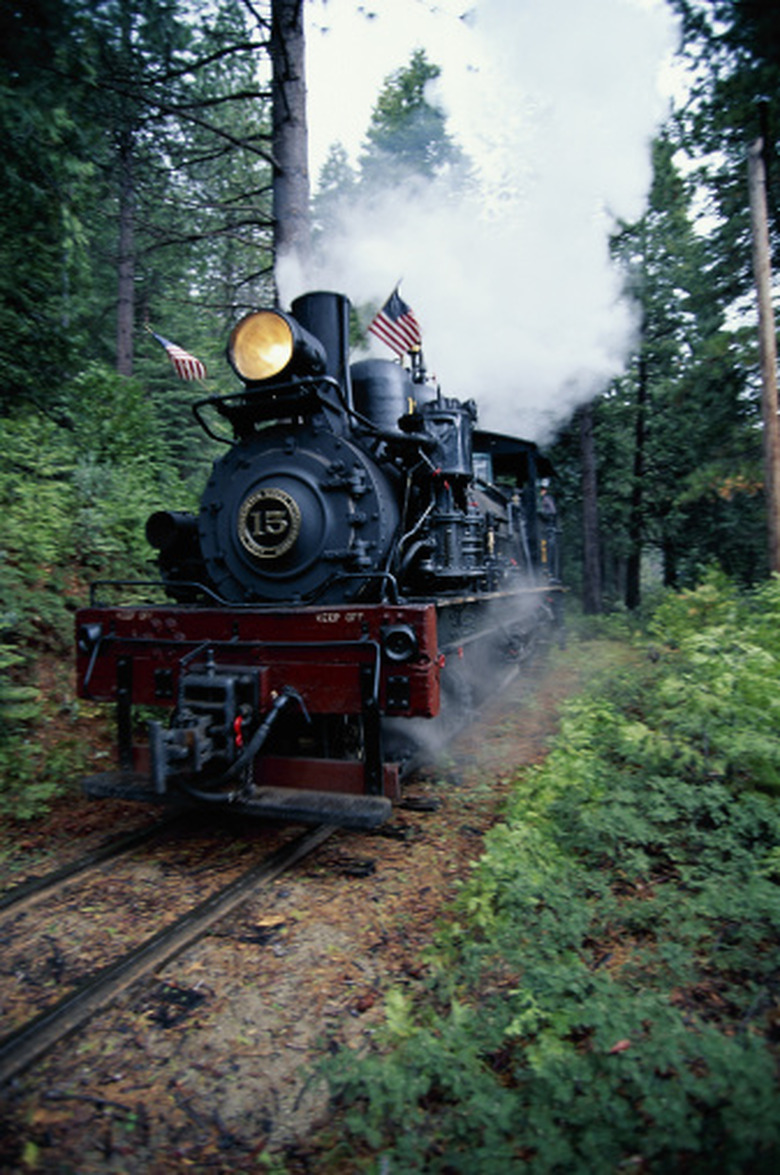What Are Two Types Of Vaporization?
Vaporization is the process by which a liquid is turned into a gas. The two types of vaporization are evaporation and boiling. Evaporation refers to the surface of a body of liquid turning into gas, such as a drop of water on the concrete turning into a gas on a hot day. Boiling refers to heating up a liquid until it releases vapor, such as heating water on a stove until steam forms.
Evaporation Definition
Evaporation Definition
Evaporation occurs on the surface level of a liquid, in which molecules with kinetic energy are activated by a heat source. The heat source causes the molecules to break bonds with one another and turn into a gas. For example, the sun may cause a lake to evaporate by heating up the molecules on the lake's surface. When these molecules are heated, they rise into the air as steam.
Boiling Definition
Boiling Definition
Boiling is more complicated than evaporation and involves a liquid reaching a certain vaporization pressure. This level of pressure is called a "boiling point." The boiling point is reached when a substance's internal pressure, also called vapor pressure, is equal to the pressure of the surrounding atmospheric pressure. When this level of pressure is reached, a substance begins to boil, and molecules within the substance assume a gaseous state. Every liquid has a different boiling point temperature.
Primary Differences
Primary Differences
Although both evaporation and boiling involve liquid transforming into gas, evaporation refers to only the surface level turning into a gas, and the internal vaporization pressure of the liquid remains low. When a substance boils, the vaporization pressure is high, and the surface evaporates along with the rest of the liquid at an equal rate. A sign of boiling is the presence of bubbles, which occur only in the process of boiling and not in evaporation.
Vaporization on Atomic Level
Vaporization on Atomic Level
Both types of vaporization occur when the temperature reaches a certain level, whether on the surface or throughout the liquid. The temperature increase causes molecules to move quickly, and this motion breaks the intermolecular bonds between the atoms. As these bonds are broken, the molecules and atoms separate and spread out, which causes them to vaporize, or turn into a gas. When the temperature goes back down, the molecules will eventually return to a liquid state.
References
Cite This Article
MLA
McDaniel, John. "What Are Two Types Of Vaporization?" sciencing.com, https://www.sciencing.com/two-types-vaporization-8676696/. 24 April 2017.
APA
McDaniel, John. (2017, April 24). What Are Two Types Of Vaporization?. sciencing.com. Retrieved from https://www.sciencing.com/two-types-vaporization-8676696/
Chicago
McDaniel, John. What Are Two Types Of Vaporization? last modified March 24, 2022. https://www.sciencing.com/two-types-vaporization-8676696/
